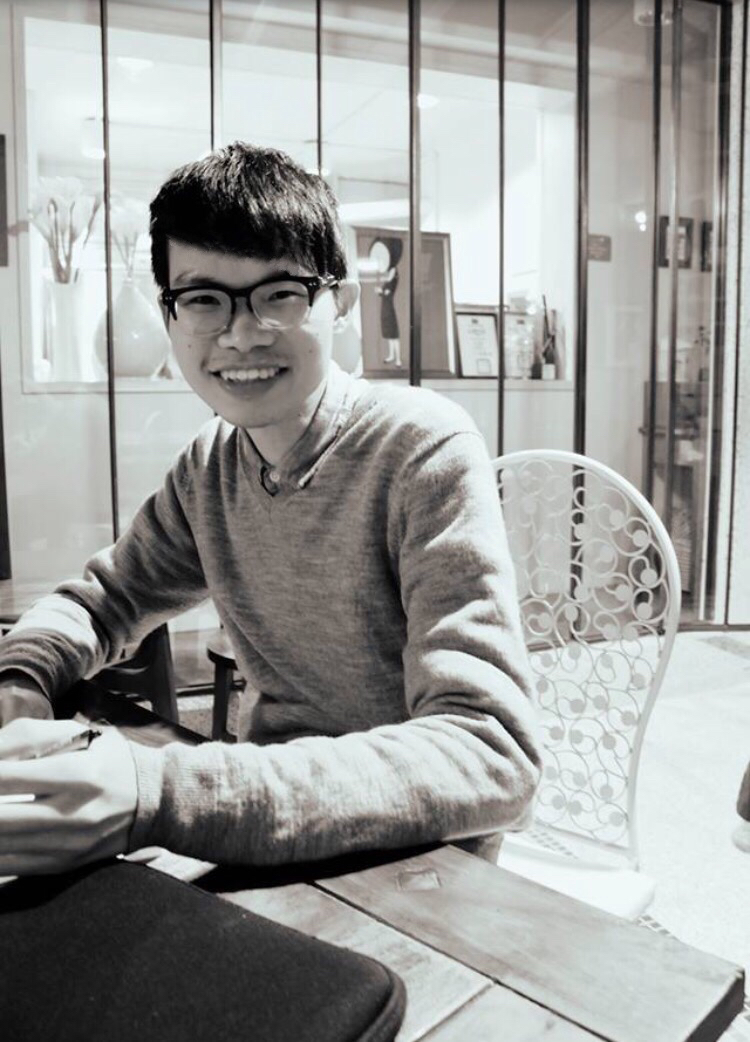| 經歷: |

翁鈺庭
翁鈺庭,臺灣嘉義人,作品曾發表於芬蘭「KORVAT AUKI音樂會」(2017),菲律賓 「亞洲作曲家聯盟大會」(2015)、臺灣師範大學「音樂臺灣音樂會」(2014)、臺北藝術大學「不插電科技聲音藝術展」(2014), 高雄至德堂與臺北中山堂「愛河藝術家之夜」(2011)音樂會。其中,作品—「無意識之前」收錄於「臺灣作曲家系列作品XI」CD合輯中。
畢業於臺北藝術大學,2016-2017年赴芬蘭交換學生就讀西貝流士音樂學院,現就讀臺北藝術大學音樂研究所,師事潘皇龍。
創作中不僅探索自我,也透過其他活動,多方面激發、突破與挑戰,擁有更獨特、豐富的生命經驗。期許未來能更打開自己的心,並多元、拓寬,接納不同的學習面向。
Yu-Ting Weng
Yu-Ting Weng, born in Chiayi city in Taiwan, his compositions have been frequently presented in music festivals and concerts, including the Korvat Auki Concert (Finland, 2017), Asian Composers League Concert (Philippines, 2015), Asian Composers League Concert (Taipei, Taiwan, 2014), Unplugged New Midea Art Exhibition (Taipei, Taiwan, 2014), In 2011, he was also invited by The Choirs of the Artists of Love River, his work have performed in Jhihde Hall of Kaohsiung City and Taipei ZhongShan Hall. His work-“before unconsciousness” have included in the CD of “Taiwan Contemporary Composers XI”.
Yu-Ting Weng graduated from Taipei National University of the Arts. During 2016-2017 he went to Finland to study exchange program in Sibelius Academy University of the Arts Helsinki. Now, he is studying for my master degree in Taipei National University of the Arts, majoring in musical composition and under instruction with professor Hwang-Long Pan.
《Skewb 幾何鑽》
本作品將幾何學概念置入音樂中,使音樂不再是線性式的創作,而是以「面體」、「圖型」為思考單位。
Skewb Diamond, 是一款於1980年由Tony Durham發明推出的鑽石魔術方塊,它具有八個正三角形中心面與六個角塊組織而成,其中共有十四個可移動的方塊,每一次移動可以旋轉4個面塊及3個角塊120°或-120°,因此可形成138240種變化狀態。
本創作以不同素材的拼接與重疊(Overlap)、平行塊狀和聲聲響以及多端的織體變化,描繪方塊多種組合變化的特性。不僅以此為靈感來源,另一方面也試圖呈現鑽石之特性,如:色散、折光性、硬度、拋光等。音樂中屬於金屬、尖、硬材質之聲音特質,試圖描繪光線於鑽石上的變化與鑽石之硬度。此外,鑽石最原始的切割法:Point cut,與魔術方塊形體相同,為正八面體結構,因此音樂每一段落同時也象徵各面體的不同面貌。
使音樂呈現「多面性」的思維,多個面體,則構築為一空間,嘗試將音樂整體作為具有多種角度與立體之空間性來觀看與聆聽。
Skewb Diamond
Through the application of concepts from geometry, this work transforms music from a linear mode of expression into an form that employs surfaces and graphics as conceptual units.
Skewb Diamond, is an octahedron-shaped puzzle similar to the Rubik’s Cube which has 6 octahedral corner pieces and 8 triangular face centers invented by Tony Durham in 1980. It has 14 movable pieces which can be rearranged in a total of 138,240 possible combinations.
This work combines and layers different elements, and employs parallel phrases and harmonies as well as a range of textures, to depict the multiple composite characteristics of the cube, one of the five Platonic solids, with a host of marvelous characteristics. Drawing inspiration from this, this musical composition also attempts to convey essential characteristics of the diamond, such as dispersion of color, refraction of light, its mineral hardness, shine, and so on. The metallic, sharp, and hard qualities of the music in this piece aim to convey the hardness and fickleness of diamonds. Also, the diamond’s oldest and most basic cut—the point cut—shares commonalities with the famous Rubik’s Cube: they’re both eight-faced solids, or octahedrons, and each segment of the music piece simultaneously represents the different appearances of these various faces.
Thus, this work is multifaceted in the very literal sense that multiple facets jointly create and hold one space between them, and it thus seeks to equip music with the spatial attributes of multiple perspectives and dimensions, in a novel audiovisual experience.
|